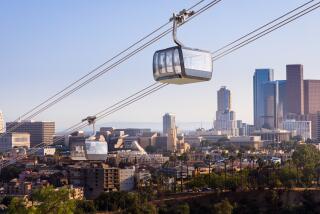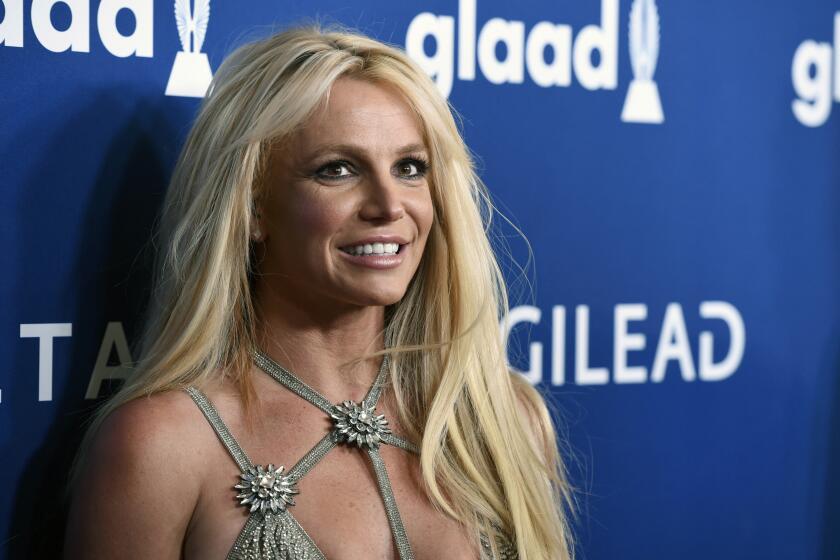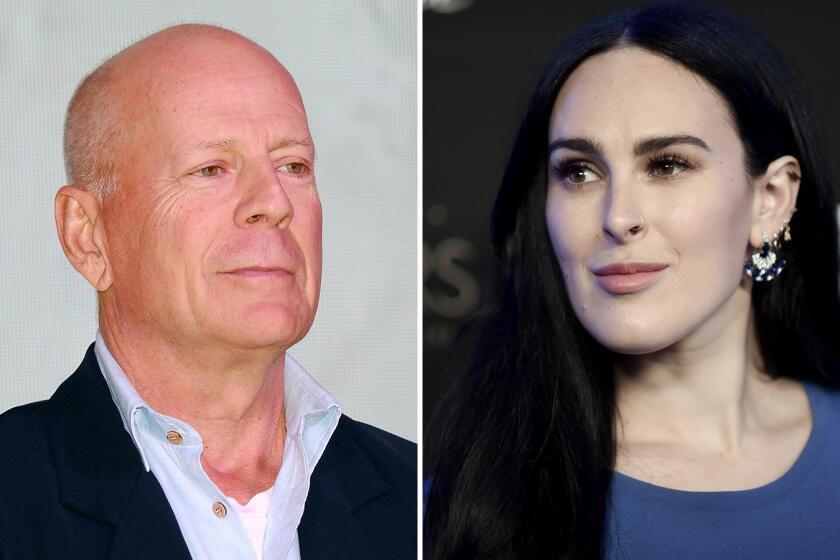‘Forever Blue: The True Story of Walter O’Malley, Baseball’s Most Controversial Owner, and the Dodgers of Brooklyn and Los Angeles’ by Michael D’Antonio
To Brooklynites of a certain age, Dodgers owner Walter O’Malley was a money-grubbing weasel who ripped the soul from their community when he announced he was moving the team to L.A. in 1957. Many Angelenos, however, view O’Malley as a pioneering saint for bringing Major League Baseball to the West Coast, thus heralding the seismic shift of professional sports beyond the Mississippi, while a group of vocal critics believes that the stadium deal O’Malley struck with the city of Los Angeles destroyed the predominantly Mexican American neighborhood of Chavez Ravine.
In “Forever Blue: The True Story of Walter O’Malley, Baseball’s Most Controversial Owner, and the Dodgers of Brooklyn and Los Angeles,” Michael D’Antonio notes that O’Malley was not easy to write about because he was “not the type who would reflect aloud on his motivations or reveal his innermost thoughts.” But unprecedented access to the family’s archives gave D’Antonio an insider’s perspective; in this nuanced, but decidedly pro-O’Malley work, he concludes there’s much to admire about the owner, just as much remains misunderstood about his actions.
The son of a Tammany Hall pol, O’Malley parlayed his family connections, an Ivy League education and a Fordham law degree into substantial wealth, even during the Depression. His legal work for the Brooklyn Trust Co. introduced him to the Dodgers’ business machinations, and he purchased shares of the team beginning in 1944.
Dem Bums had long been perennial cellar-dwellers. Under O’Malley and co-owner Branch Rickey, they became perennial contenders. Their post- World War II lineup featured Rickey’s masterstroke: former UCLA star Jackie Robinson, who broke baseball’s color barrier. In 1955, several years after O’Malley bought out Rickey, Brooklyn whipped the juggernaut Yankees to capture their lone World Series.
O’Malley next faced the issue that would define his career. The Dodgers played at Ebbets Field in Flatbush, but white flight to Long Island was decreasing attendance at the 1913 relic. O’Malley wanted to build a new stadium, with more parking spaces for his suburban-based fans. His good-faith efforts to keep the Dodgers in the borough included an offer to finance a domed ballpark.
He lacked one element: land. At every turn, D’Antonio writes, New York City power-broker Robert Moses stymied O’Malley by refusing to allow him to buy public property. Building on research from two excellent books, Neil Sullivan’s “The Dodgers Move West” and Michael Shapiro’s “The Last Good Season,” D’Antonio concludes that Moses “condemned the Brooklyn stadium idea” and was the true villain.
It’s also true that, as he dickered with Moses, O’Malley looked beyond Brooklyn. He saw how the fortunes of the Boston Braves and the Philadelphia A’s had improved when they moved to, respectively, Milwaukee (1953) and Kansas City (1955), and that advances in aeronautics and television technology made the western U.S. an accessible, attractive option. Meanwhile, local newspaper columnist Vincent X. Flaherty bombarded O’Malley with “insider advice” about the L.A. situation.
In Southern California, where fans rooted for the Hollywood Stars and Los Angeles Angels of the Pacific Coast League, officials dangled what O’Malley couldn’t get in Brooklyn. Land: approximately 315 publicly owned acres just north of downtown, and millions in road improvements, basically in exchange for the Wrigley Field property in South L.A. that O’Malley owned. City Councilman Ed Roybal accurately called it a “sweetheart deal.” O’Malley had to survive a bruising city referendum as well as various lawsuits before he could erect Dodger Stadium for upward of $20 million.
D’Antonio debunks the myth that Dodger Stadium ruined Chavez Ravine. Its dismantling happened before O’Malley’s arrival, when residents were displaced in advance of a public housing project that was to be built on the site. Local pols eventually scuttled the deal, opening the way for O’Malley. Relations with the Mexican American community remained frosty, however, until pitcher Fernando Valenzuela came along in 1980.
By then, the Dodgers were ensconced in what Times columnist Jim Murray called “the Taj Mahal of ballparks,” drawing more than 2 million fans a year. The team responded with three World Series titles from 1958 to 1965. In making the national pastime truly national, O’Malley sparked an era of westward-ho expansion, with the Lakers (1960), the Angels (1961) and the Kings (1967) beginning play in L.A.
D’Antonio excels in detailing why O’Malley remains so unpopular. In part, it’s because he refused to explain himself, at least publicly. Also, he clashed with several men, most prominently Rickey, Robinson and broadcaster Red Barber, who are among the game’s most revered figures. Meanwhile, the publication of Roger Kahn’s sublime “Boys of Summer” in 1971 triggered waves of nostalgic hand-wringing about Brooklyn’s golden years.
If there’s a flaw in “Forever Blue,” it’s that D’Antonio is too deferential. That may be an earnest effort to counter decades of anti-O’Malley screeds from the likes of Larry King and Pete Hamill. Who can forget this one: “If Stalin, Hitler and O’Malley are in a room and you have two bullets, who do you shoot?” The answer: “O’Malley, twice.”
D’Antonio doesn’t relate the joke, maybe due to its sheer nastiness. Of course, that’s the point. What other owner could inspire such vitriol?
Walter O’Malley doesn’t need an apologist. Alternately shrewd and ruthless, he operated with one underlying principal: doing what was best for the Dodgers and O’Malley. Often, that meant parting company -- with players who’d lost a step, with executives who became too independent, with cities that refused to negotiate on his terms, with fans unable to let go. By the time of his death, in 1979, the legacy of his Hall of Fame career was secure: Professional sports is, first and foremost, a business.
Davis is a contributing writer at Los Angeles magazine.
More to Read
The biggest entertainment stories
Get our big stories about Hollywood, film, television, music, arts, culture and more right in your inbox as soon as they publish.
You may occasionally receive promotional content from the Los Angeles Times.






